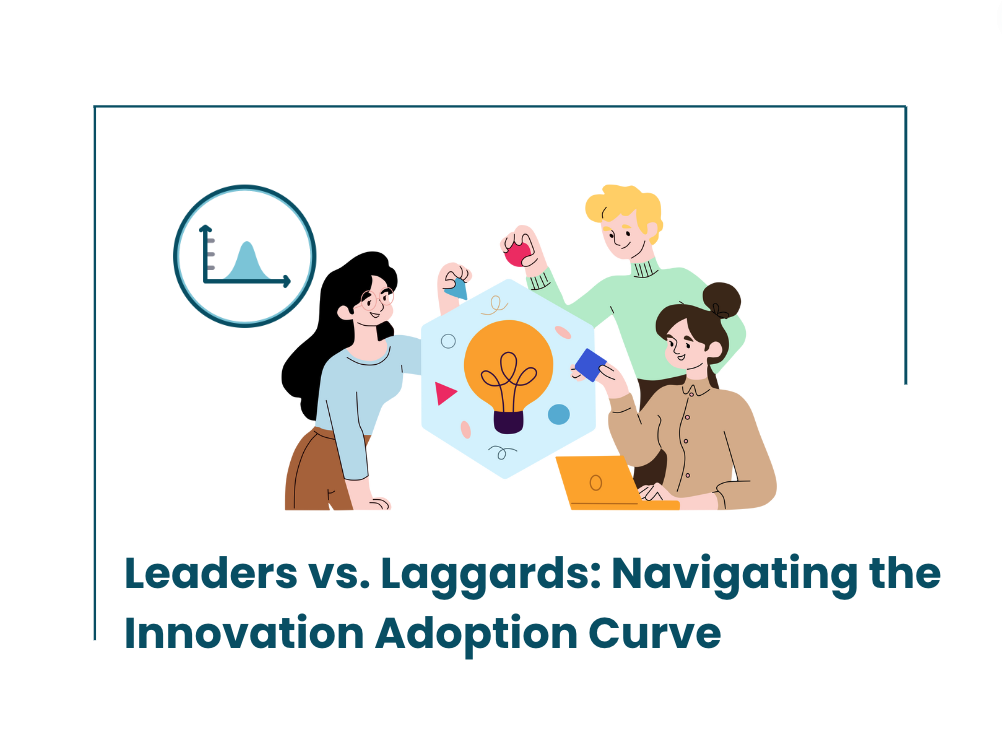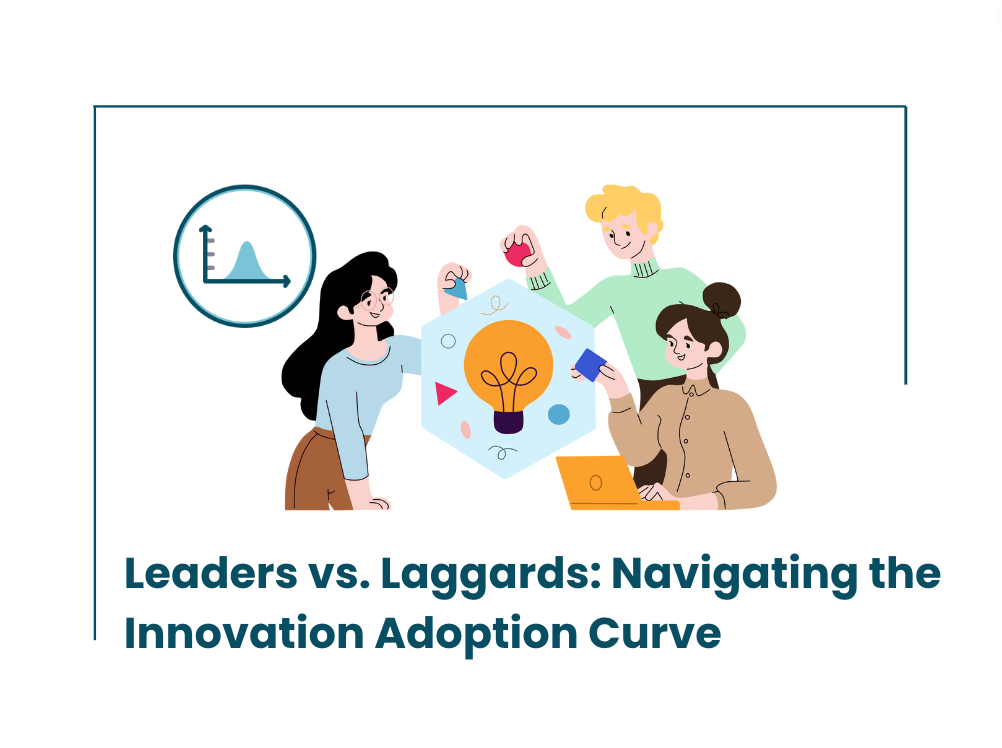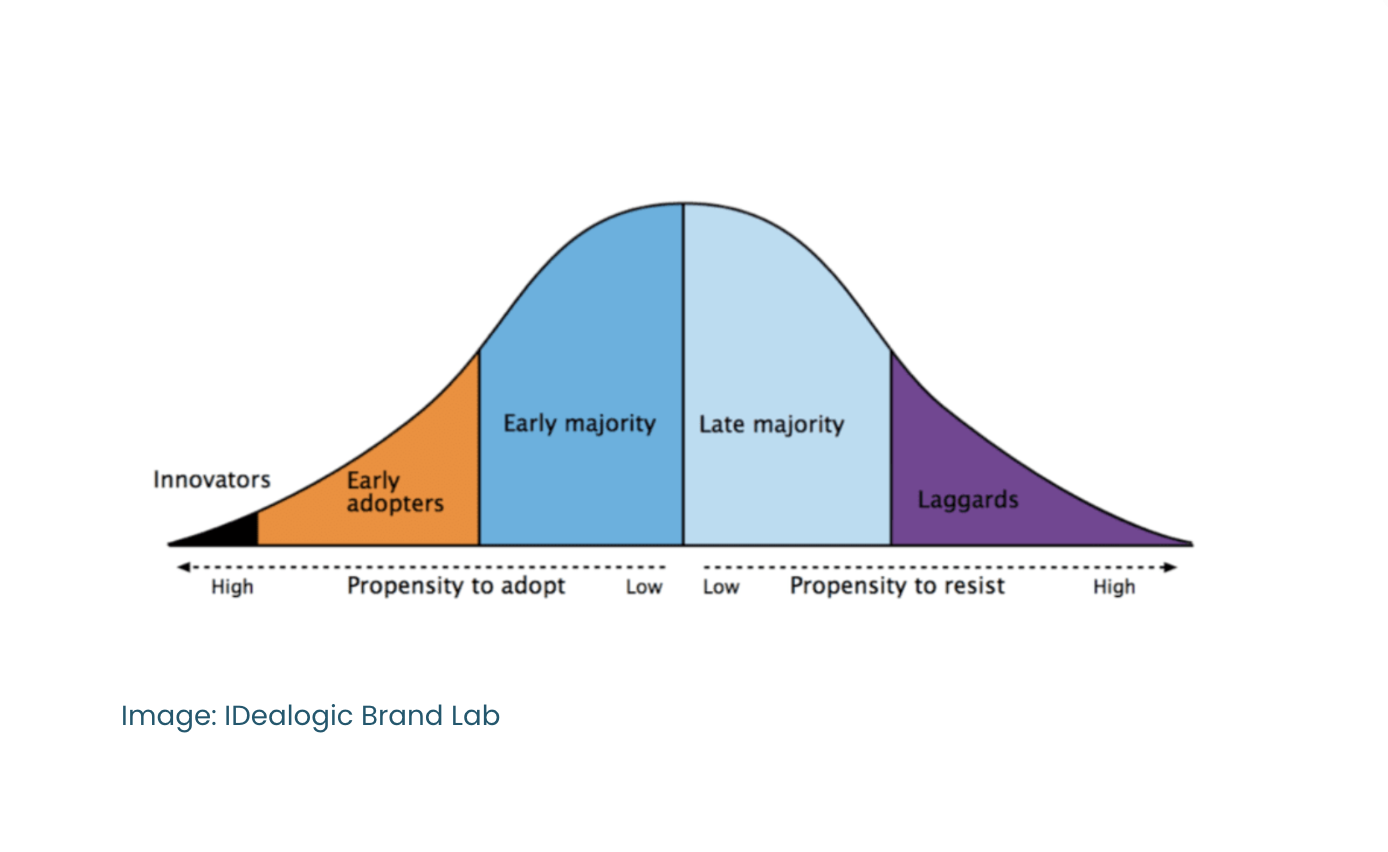
Contents

In today's fast-paced world, the ability to stay ahead of technological trends often defines the success or failure of a business. As technology continues to evolve at an unprecedented pace, understanding the dynamics of its adoption becomes crucial for business leaders and entrepreneurs. One of the most insightful frameworks for this purpose is the innovation adoption curve. This model delineates how different segments of a population adopt new technologies, providing invaluable insights into consumer behavior and market dynamics.
For forward-thinking business leaders, mastering the innovation adoption curve can be transformative, as it helps identify early adopters, leverage their influence, and strategically plan for broader market reach. By aligning strategies with the adoption stages—leaders, early adopters, early majority, late majority, and laggards—companies can tailor marketing, product development, and customer engagement effectively, fostering growth and ensuring a competitive edge.
The innovation adoption curve is a practical tool that can help businesses more strategically approach technology and innovation. Understanding this curve enables business leaders to navigate technological advancements, anticipate market shifts, and drive sustained success.

Understanding the Innovation Adoption Curve
The innovation adoption curve categorizes a population based on their willingness to adopt new innovations. It helps in identifying how different groups react to new technologies and can guide businesses in targeting their marketing and development efforts effectively. Let's break down the five segments of the curve:
Leaders
Leaders are adventurous trailblazers who thrive on being the first to explore and adopt new technologies, driven by a passion for innovation and change. While their fixation on new products can seem risky to the mainstream, their early endorsement is crucial for reassuring others of a product's viability. Their feedback is invaluable for refining and improving products before they reach the broader market, making them key agents of change despite their small numbers in any market segment.
Early Adopters
Early adopters are visionaries who invest in new technology to achieve revolutionary breakthroughs and gain a dramatic competitive advantage. They see potential where others see risk, positioning themselves ahead of their competition by leveraging innovations early. These individuals love gaining an edge over their peers and have the resources to invest in new technologies, serving as independent testers who identify issues and adapt innovations to meet mainstream needs.
Early Majority
The early majority represents the mainstream and values innovations that solve specific problems but prefer products that are fully tested and adhere to industry standards. They are more cautious than early adopters, seeking reliable, effective solutions that offer incremental improvements. This segment, roughly one-third of the adoption life cycle, requires off-the-shelf performance, minimal disruption, low commitment of time, and rapid payback periods. Winning their business is key to sustained profits and growth, as they look for proven, easy-to-use products that fit seamlessly into their existing processes.
Late Majority
Late majority adopters are highly risk-averse, adopting new innovations only to avoid the embarrassment of being left behind. They wait until a product is widely accepted and proven effective, relying on the experiences of the early majority for reassurance. Change is unsettling for them, so they seek high levels of support and standards certification. Comprising about one-third of the total buying population, serving this segment correctly leads to sustained profitability. Though profit margins decrease as products mature, so do selling costs, and research and development costs are largely amortized.
Laggards
Laggards are traditionalists who hold out until the bitter end, valuing traditional methods over new ones and refusing to adopt new technologies until forced by obsolescence. Their reluctance to change often puts them at a significant disadvantage in a competitive market, as they only buy new products when their old systems fail and cannot be repaired. Skeptical of change, laggards are the hardest group to bring on board for innovation.
The Role of AI in the Innovation Adoption Curve
As the innovation adoption curve relates to AI, the general public is transitioning from the early adopter stage to the early majority stage. This shift marks AI's movement from visionaries to mainstream acceptance. Early adopters have shown AI's potential across sectors, setting the stage for broader adoption. As the early majority embraces AI, we anticipate increased demand for user-friendly, reliable AI solutions. This transition offers significant growth opportunities for businesses that cater to the early majority, driving innovation and setting new market standards. The momentum at this stage will likely accelerate AI adoption and impact across industries.
Key Takeaways:
- Early Adopters and AI: Early adopters of AI are already seeing the benefits of integrating AI into their operations. They are harnessing the power of AI to streamline processes, gain insights, and enhance customer experiences. For these businesses, AI is a tool that drives growth and innovation
. - Early Majority and AI: The early majority is beginning to see the value of AI as a solution to specific problems. They are looking for AI applications that are reliable, tested, and compliant with industry standards. These businesses are starting to implement AI to stay competitive.
- Challenges for Late Majority and Laggards: For the late majority and laggards, the reluctance to adopt AI could be detrimental. The longer they wait, the more they risk falling behind. The competitive edge that AI offers will become increasingly difficult to catch up with as more businesses integrate AI into their core operations. If you wait too long, you will be forced into retirement.

Navigating the Curve
For business leaders and entrepreneurs, now is the time to assess where you stand on the innovation adoption curve. If it's not in your nature to be an early adopter or part of the early majority, especially concerning AI, it's crucial to step out of your comfort zone before it's too late.
Steps to Consider:
- Educate Yourself and Your Team: Understanding AI and its potential applications in your business is the first step. Attend webinars, read industry reports, and engage with experts to build a comprehensive understanding. Louder Co. offers an AI Keynote which empowers your team to understand and leverage AI effectively.
- Start Small: You don't have to overhaul your entire operation overnight. Start with small, manageable AI projects that can demonstrate value quickly. This can help build confidence and buy-in from business stakeholders.
- Leverage Expert Advice: Consult with AI experts and advisors who can guide you through the implementation process. Their insights can help you avoid common pitfalls and maximize the benefits of AI.
- Monitor and Adapt: Keep a close eye on the outcomes of your AI initiatives. Use data and feedback to refine your approach and make necessary adjustments. Flexibility and adaptability are key to making the most of AI.
The innovation adoption curve provides a roadmap for understanding how different segments of the population adopt new technologies. In the context of AI, being an early adopter or part of the early majority can offer significant competitive advantages. For business leaders and entrepreneurs, the time to act is now.
At Louder Co., we offer a holistic approach to AI, ensuring that your business not only adopts AI but thrives with it. If you're ready to get started on your AI journey, get in touch today! Together, we can turn the complexities of AI into opportunities for growth and success.


